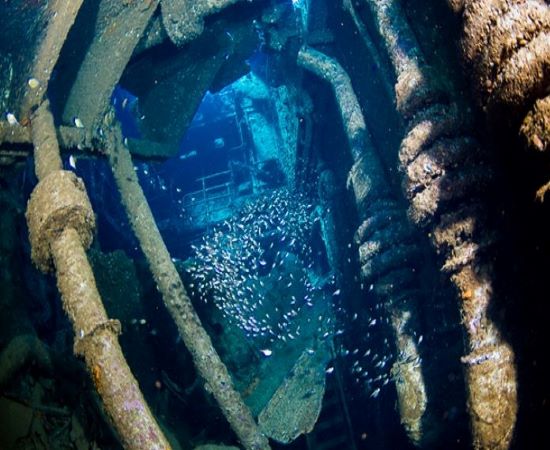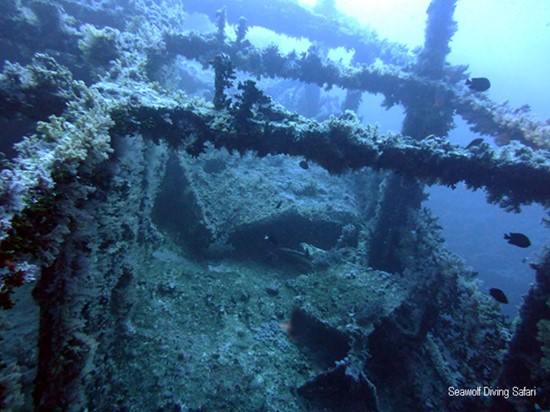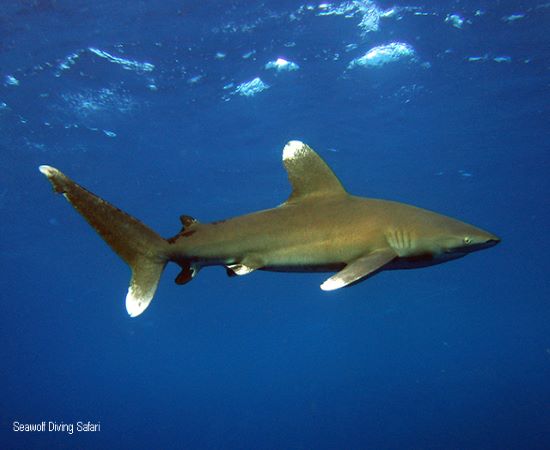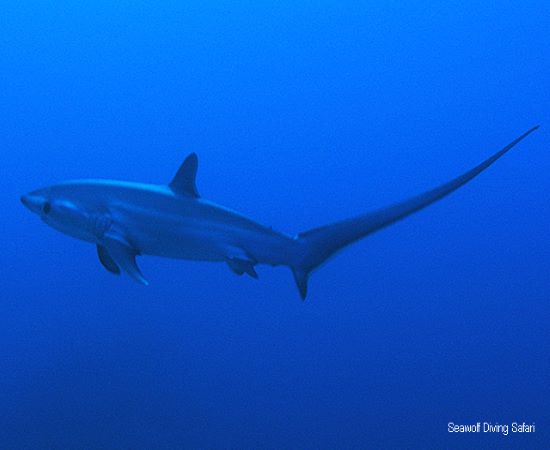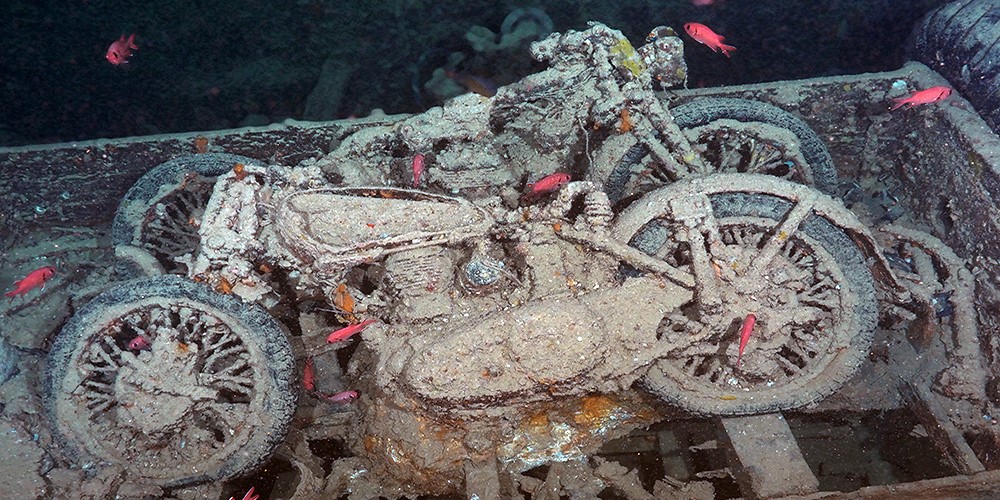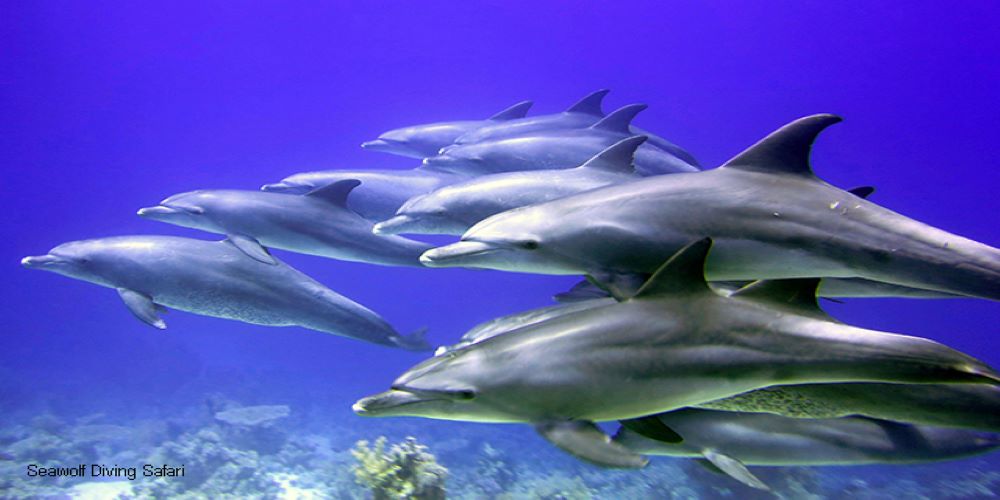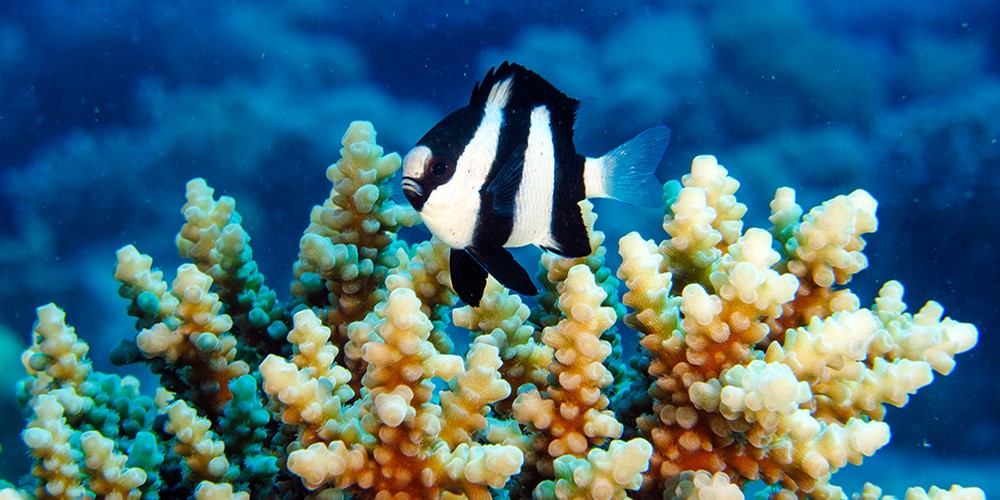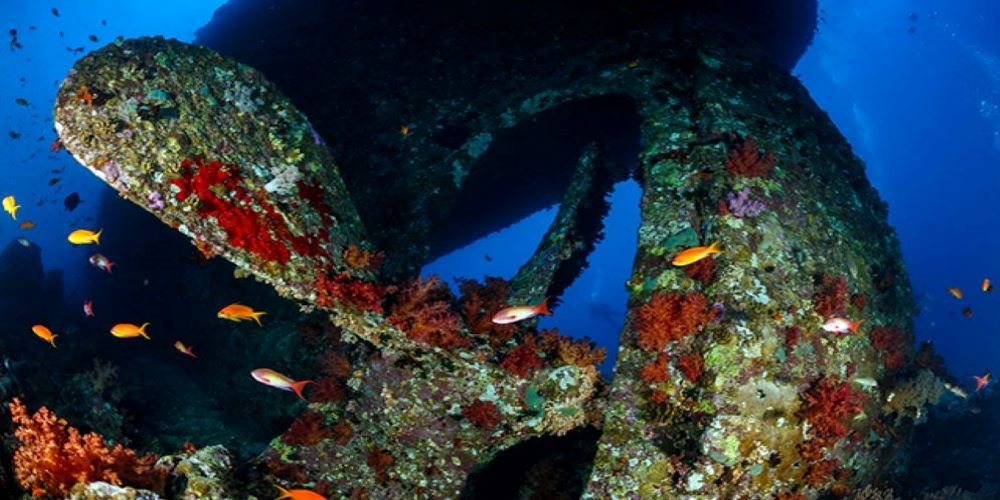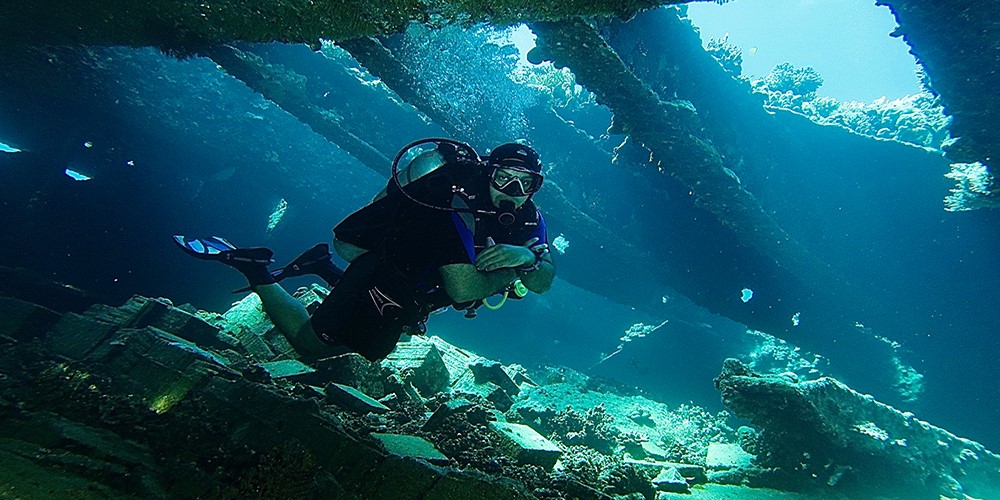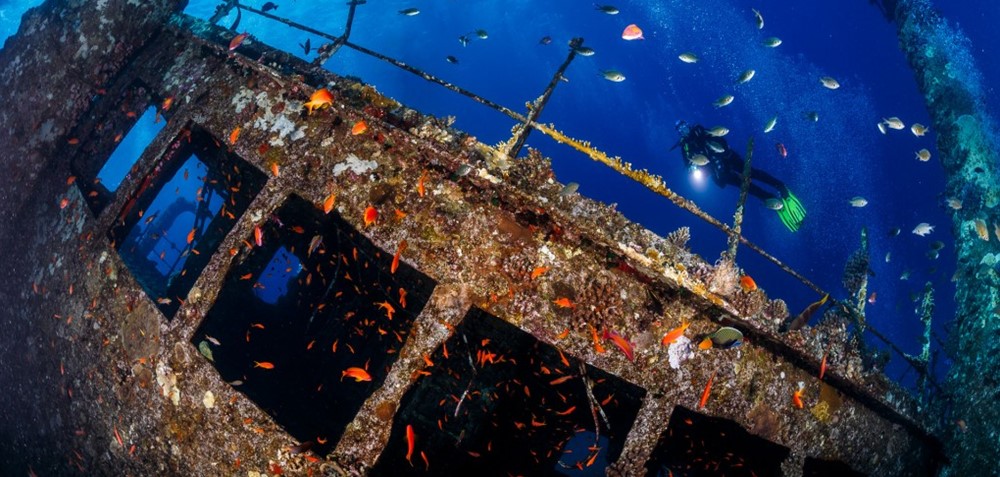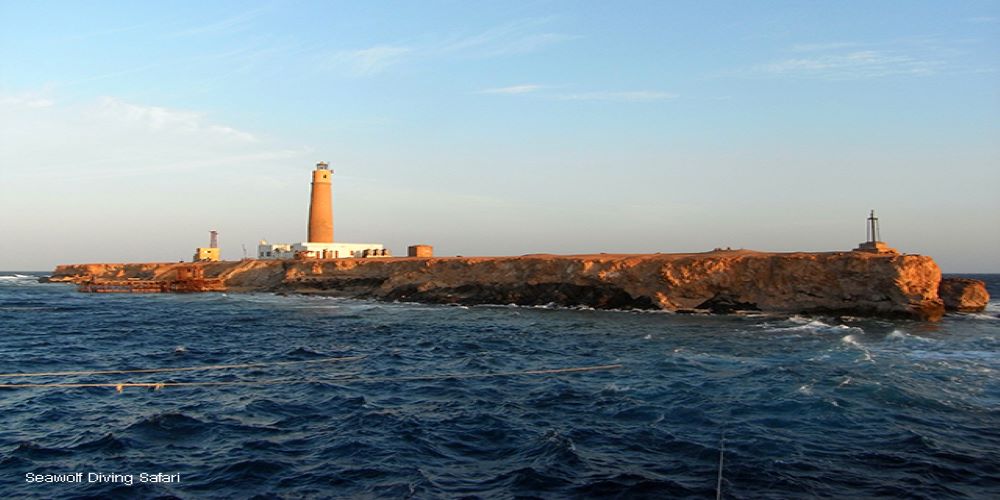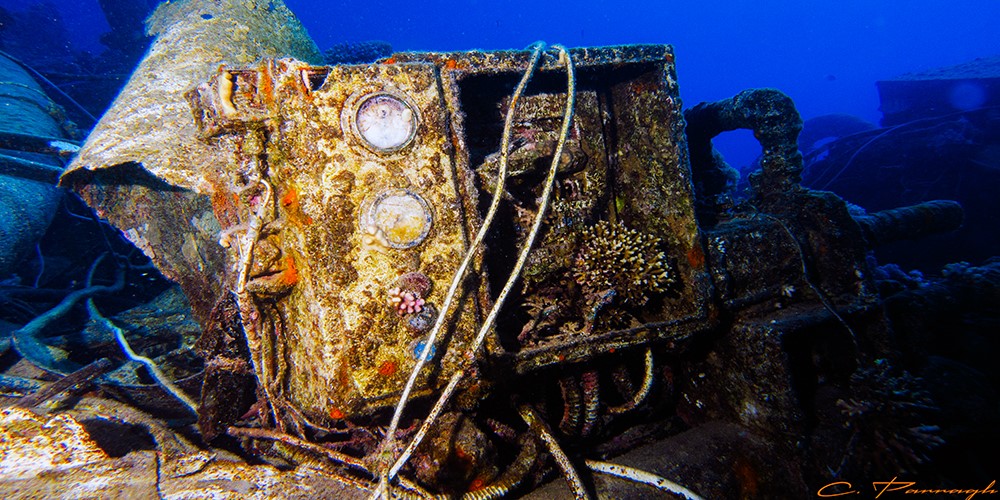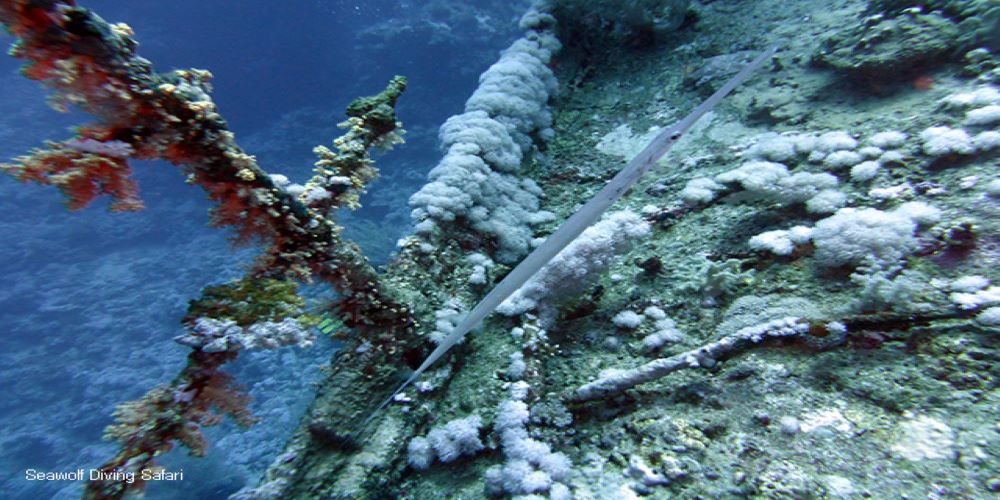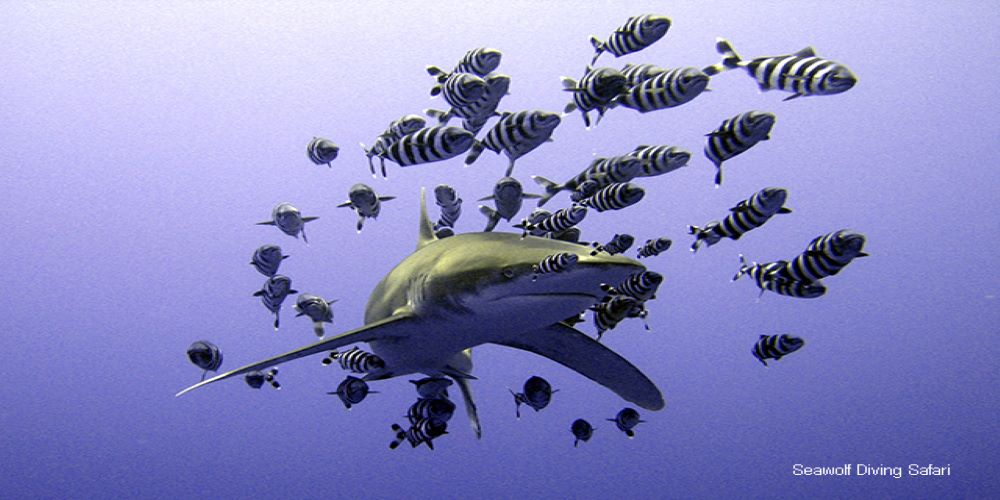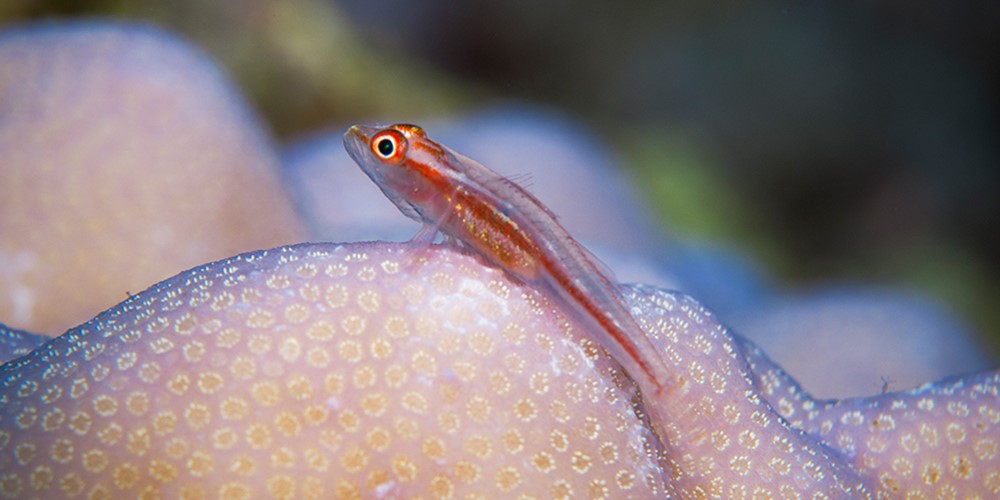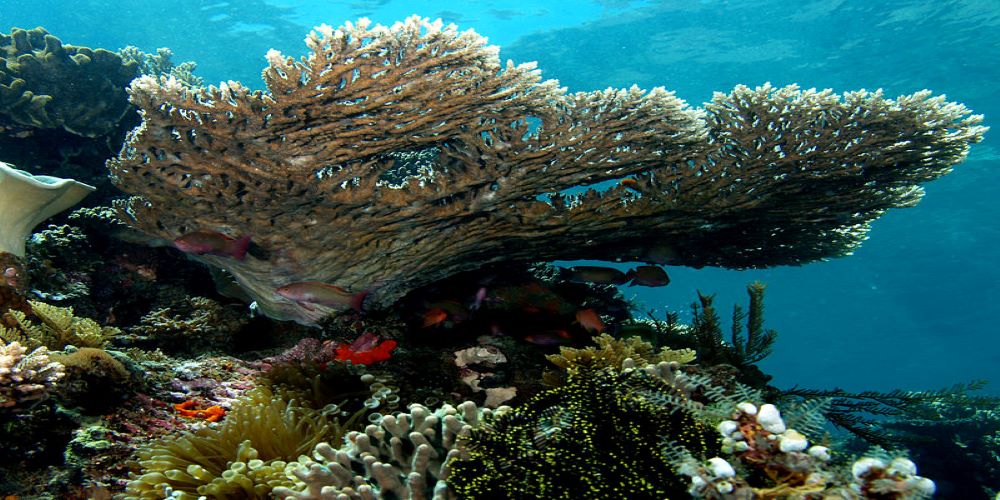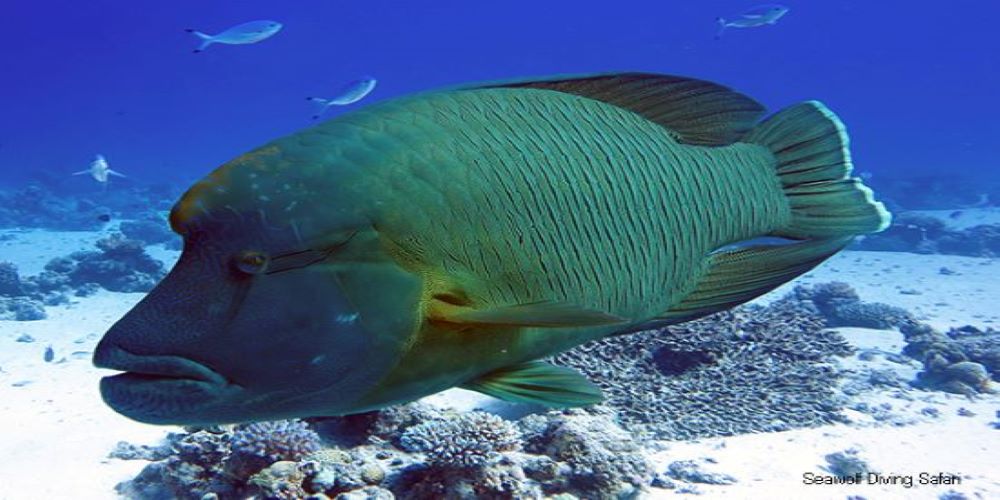North Wrecks & Brother Islands
- The tour starts in Hurghada and leads you first to the famous WRACKS in the north of the Red Sea, then it continues to the Brother Islands with its drop-offs and big fish.
- Fans of old sunken ships are guaranteed to get their money's worth on this liveaboard. At the Big Brother you will find the Numidia and the Aida and at both "brothers" you will find all the big fish the Red Sea has to offer - hammerheads, thresher sharks, grey sharks, oceanic whitetips....
- Besides the wrecks of Abu Nuhas (Carnatic, Crisoula K, Ghiannis D.) the Thistlegorm is of course also on the program.
SS Thistlegorm
The English ship was on her way to Egypt to supply the English Africa Corps with supplies when she was attacked by a German bomber on 6.10.1941 and sank.
The wreck lies upright on the seabed at a depth of 30 meters.
The cargo is especially interesting: tanks, trucks, weapons, motorcycles, railroad cars as well as a locomotive.
The Thistlegorm is a must for every Red Sea diver. She is a delight for wreck enthusiasts, not to mention her spectacular cargo.
But she also offers a variety of fish. Schools of barracudas or big tunas and snappers are not uncommon here. As an artificial reef, it also attracts countless coral fish.
Shaab el Erg
Shaab el Erg is an extensive reef, in the shape of a horseshoe. This formation is open to the south with a shallow lagoon, which is full of ergs. The whole lagoon can be dived.
Very popular are the northern tip, the eastern wall or the southwestern tip - Gota Shaab el Erg.
Siyoul Kebira
Sometimes sand valleys (wadis) interrupt the reef, then there are overhangs and crevices to explore.
An overabundant growth of corals and countless fish amaze the diver. The dives with a mostly fast current lead to the northern tip.
Siyoul Soraya
It's a fantastic, colorful dive, where you can discover all kind of reef fishes of the Red Sea.
Salem Express
It was a tragic navigation error that caused the sinking of the Salem Express. The ship was coming from Jeddah in Saudi Arabia and was heading for the port of Safaga. Only eleven kilometers from the destination port, the ferry ran full speed into the westernmost coral block from Hyndman Reef.
A 10-meter hole had been torn in the forward part of the hull, causing the ship's huge bow hatch to burst open. Enormous amounts of water entered through these two openings and it sank in just a few minutes. Of the 690 passengers officially listed, only 180 survived the accident.
Abu Nuhas / Carnatic
The Carnatic, on a voyage from Liverpool to Bombay with 27 crew, 203 passengers, and a cargo of cotton, copper plates, and 40,000 pounds sterling in gold, ran aground on the reef Shab Abu Nuhas on the night of September 13, 1869. The ship initially remained on the reef, but broke apart and sank on September 15, despite various rescue attempts .
Overconfidence in the ship's stability had a disastrous effect. Since the Carnatic had not been cleared and passengers and crew members were on board, the ship took 27 people down with it . The survivors first rescued themselves on Shadwan Island and were later recovered by the Sumatra.
In October 1869, a helmet diver recovered most of the gold cargo as well as 700 copper plates. Several bodies were also discovered - one victim was still stuck in a porthole through which he had tried unsuccessfully to escape. 8,000 pounds sterling could still be in the wreck. No one has found them yet - perhaps they were secretly salvaged or disappeared under coral.
The wreck was rediscovered in 1984 and has been a popular destination for Hurghada dive boats ever since. Since then, souvenir hunters have plundered it thoroughly. The Carnatic lies on its side at the base of the reef at a depth of 20 to 27 meters. In the middle the ship is badly damaged, bow and stern are well preserved. The wooden decks have rotted away so that it is safe to enter the interior. The hull is densely covered with stone and leather corals.
Abu Nuhas / Chrisoula
After several previous owners, she finally changed to the shipping company Clarion Marine and was given the name Chrisoula K. Under this name she also made her last voyage, which took her to the area of the Abu Nuhas reef in the Red Sea on August 30, 1981 with a cargo of cheap Italian floor tiles.
Due to a navigational error by the captain, the ship ran aground on the reef during the night of August 30 and sank.
Today the wreck lies in an optimal position for divers at a depth between 5 meters and a maximum of 25 meters.
The ship is in a slight inclination, the middle part is heavily damaged by the impact.
Abu Nuhas / Ghiannis
For a long time the front half, which had run up on the reef, remained stationary and indicated the place of the accident, then it too sank and lay down on the port side.
The aft half of the wreck lies somewhat inclined on the port side. Above the front of the quarterdeck rises the smokestack with the large letters "D". The "D" stands for the name of the shipping company: Danae.
In front of the chimney is the bridge deck, behind it other spaces, a huge winch, the bollards, the intact railing, and even the frame that used to support a large awning was not damaged in the sinking.
At the base of the funnel are narrow portholes leading into the engine room. The engines are an impressive sight with their long rows of cam arms, valves and pipes.
The middle section of the ship resembles a junkyard, as iron girders are bent and torn, and the sides lie collapsed on the seabed. This area of the wreck is teeming with crocodile fish, scorpion fish and parrot fish. Some groupers have also made their home here.
Big Brother Island
The Big Brother has a length of 200m and a width of 60m. It is almost perpendicular to the north-south direction and is a steep-walled reef except for the eastern plateau. On the island you usually have the opportunity to stretch your feet, smoke a shisha with the lighthouse keeper or buy small souvenirs and enjoy the view from the lighthouse. This can change depending on the mood of the military.
The wreck of the "Numidia" lies diagonally on the reef from 15m to 75m depth. The general cargo ship hit the west side in 1901 after a navigation error. Its cargo consisted of rails and railroad wheels. It is spread around the wreck. The overgrowth of the wreck stops almost abruptly at 40 meters.
The Numidia is one of the most beautifully overgrown wrecks in the world.
The "Aida", which nestles against the reef on the southern side at a depth of 30m to 65m, has been resting there since she ran aground on the fringing reef in rough seas in 1953. She was to bring personnel for the lighthouse and material for the island. Storms in early 2010 have left the wreck a bit battered.
Around the western end there is usually high wave and some current. If it is possible to dive there in the afternoon, you have the chance to see gray reef sharks and between the wrecks hammerhead sharks from time to time.
On the eastern plateau you can see thresher sharks, also gray reef sharks can be seen there very often. Further on the north side there are nice notches and the reef wall is beautifully covered with soft and hard corals. In addition there are all kinds of fish.
To the south is the jetty that supplies the lighthouse. On both sides you will find small notches in two to five meters depth with gigantic schools of fish, hunting cornetfish, juvenile napoleon wrasse. In the open water area, hunting mackerels, tunas and barracudas often pass by.
Numidia
The Red Sea has a width of 180 km at the Brothers, yet the crew managed to hit this small island - shortly after two o'clock in the morning, Captain Craig was rudely awakened by the violent impact of the ship on the reef at the northern end of the "Big Brother".
The "officer on watch", Merwood, had probably fallen asleep at the same time as his boss. The resulting course then led the ship in truly somnambulistic safety right into the middle of the reef.
The ship was thus stuck in and on the narrow fringing reef and all efforts to free itself failed.
In the following days, attempts were made to tow the Numidia free with the help of other ships, but this failed.
Captain Craig was left with the thankless task of remaining on the desolate island for several more weeks to supervise the salvage of the cargo.
Probably in the winter storms of 1901/02, the ship was then torn from the reef and it sank for good.
Aida
Originally intended for the Egyptian Port and Lighthouse Administration, she was later used for ferry and supply work in Egyptian ports.
The AIDA was to provide supplies for the Egyptian soldiers who were always stationed on the southeast coast of Big Brother Island on a bi-monthly basis. She carried fresh water, food and the next guard shift.
On September 15, 1957 in a heavy storm, the captain, ignoring several warnings, decided to go anyway and tried to moor at Big Brother. He struck the reef.
The AIDA began to sink rapidly and the captain had no choice but to abandon ship with his crew. A lifeboat was able to be lowered and all 77 sailors were still safely picked up and set down on Big Brother before the AIDA sank.
The dive on the AIDA is an extraordinary dive, no matter how much experience you have as a diver. It leaves you wondering how a ship can sink like that and stand on the sloping reef edge, as if parked. Since the ship no longer contains any cargo, one suspects that this has slipped through the wreck and now lies in deeper regions on the ground. Same as, the AIDA stands bolt upright on the sloping reef edge, the highest point at 25 m, the screw at 57 m. Apart from the collision with the reef, the ship is still completely intact.
It has been there for more than 40 years now and is becoming more and more part of the reef, overgrown with corals.
Small Brother Island
Little Brother runs from northwest to southeast at 100m long and 50m wide. To the north, Little Brother runs somewhat wedge-shaped. Its height is 11 to 12m and it is surrounded by a fringing reef that seems to literally guard it. On the southeast side, where the moorings are, the reef drops steeply down to 10m, where there is a small reef nose that turns into a slight slope. It ends with an overhang at 37m. After that, the wall drops further into the depths. There, a lagoon like wall runs from the north to the large gorgonian garden that extends from 18m to well over 40m in the east.
Shaab Sheer
The north side of "Shaab Sheer" is a bit more turbulent, but the south side is like a lagoon and is usually very well protected. We have to reckon with the strongest current on the west side, which faces the "South Safaga Channel". Most divers appreciate the area between three and 15 metres depth because of the quasi "moonscape" of the brain coral garden, nevertheless we find many different reef inhabitants at "Shaab Sheer".
Picasso triggerfish, orange-striped and yellow-fringed triggerfish, parrotfish, pencil filefish and sling jaw wrasses can be found here in masses. In the area of the northern plateau and at the steep wall we can also see bream, bigeye empereor, mackerel, red and black snapper as well as schools of tuna and barracuda.
Panorama Reef
The east and west sides of Panorama Reef drop off steeply, but to the north and south we find very interesting plateaus with lots of life and, how could it be otherwise, a panorama of a special kind. We see nose doctor fish, barracudas, fathead mackerels, moray eels, crocodile fish, eagle rays, napoleons and turtles.
Great mountain corals, large table corals and thousands of anthias can be found on the northern plateau of Panorama Reef. The current is 95 per cent from the north, which means it's often quite "stormy" here. The southern plateau is more protected, starting at a depth of 18 metres and slowly dropping to 30 metres. Here, huge gorgonians grow above the chimney. A large anemone field is just as much a part of it as the almost obligatory sighting of stonefish.
Ras Abu Soma
"Ras", meaning the "head" of Abu Soma, is a drop off wall that descends into the depths at this reef at the northern end of Safaga Bay. At a depth of about 25 meters we find a plateau with many different corals, mainly table and hard corals.
In the blue water the chances of seeing barracudas, mackerels, snappers, tunas and bat- and surgeon fish are good. From time to time at "Ras Abu Soma" even grey reef sharks or whitetip reef sharks are sighted as well as leopard or hammerhead sharks, stingrays, guitarfish or eagle rays and in spring also manta rays.
On the plateau, however, we always find interesting reef inhabitants, such as moray eels, octopuses or cuttlefish on the reef slope and clownfish in their anemones. Further south is "Ras Abu Soma Garden", a great coral garden that turtles and milkfish also love.
Small Giftun Island
On this drift dive you jump into the water in the open sea, approximately in the middle of the south coast of the smaller of the two military islands Giftun and Seghir.
The feeling of being driven by the current into the blue water is unique and even more exciting can be the encounter with huge but tame Napoleon fish. They suddenly appear as large shadows in the blue water and curiously approach the divers.
This unforgettable glide is aimed at the vertical wall of Giftun Island, which slopes down to the bottom at a depth of 90 meters, but can confidently be explored at much shallower depths.
Just as beautiful, however, is the dive made along the wall at shallower depths. This side of Giftun Island is called Gorgonian Reef, which testifies to the abundant growth of horn or sea fan corals.
The dive ends in the lagoon in the south of the island, where the moored boat is located. Here you can often meet huge moray eels, which are close to the numerous divers. The variety of stony corals, fire corals and various other hard corals make the final part of this dive extremely interesting.
Itinerary
ATTENTION: The tour description is only a suggestion. Which dive sites are dived on the tour depends on many factors, including wind and weather.
Arrival
After arrival in Hurghada or Marsa Alam transfer to the boat.
Check in, dinner and spending the first night onboard in the marina.
Departure
Departure in the morning.
Familiarization of the boat,
Diving, safety and equipment briefing.
Two Dives at Gota Abu Ramada
Night dive at Gota Abu Ramada
Brother Islands
Dives at
Big Brother
Wreck Numidia
Small Brother
Salem Express
Dives at
Salem Express
Panorama Reef
Small Giftun Island
Night dive at Small Giftun Island
Abu Nuhas
Dives at
Abu Nuhas Chrisoula K and Ghiannis D.
Dunraven
Night dive at Shaab Mahmud
Ras Mohamed
Dives at
Ras Mohamed
SS Thistlegorm
Night dive at Bluff point/Small Gubal
Return
Dive at Bluff Point and Umm Gammar
Return to the port.
For safety reasons you should not dive 24 hours before your flight home.
Check out
Breakfast and check out no later than 10 am.
Transfer to the airport or hotel.

 ENGLISH
ENGLISH
 РУССКИЙ
РУССКИЙ
 DEUTSCH
DEUTSCH
_lg.webP)
